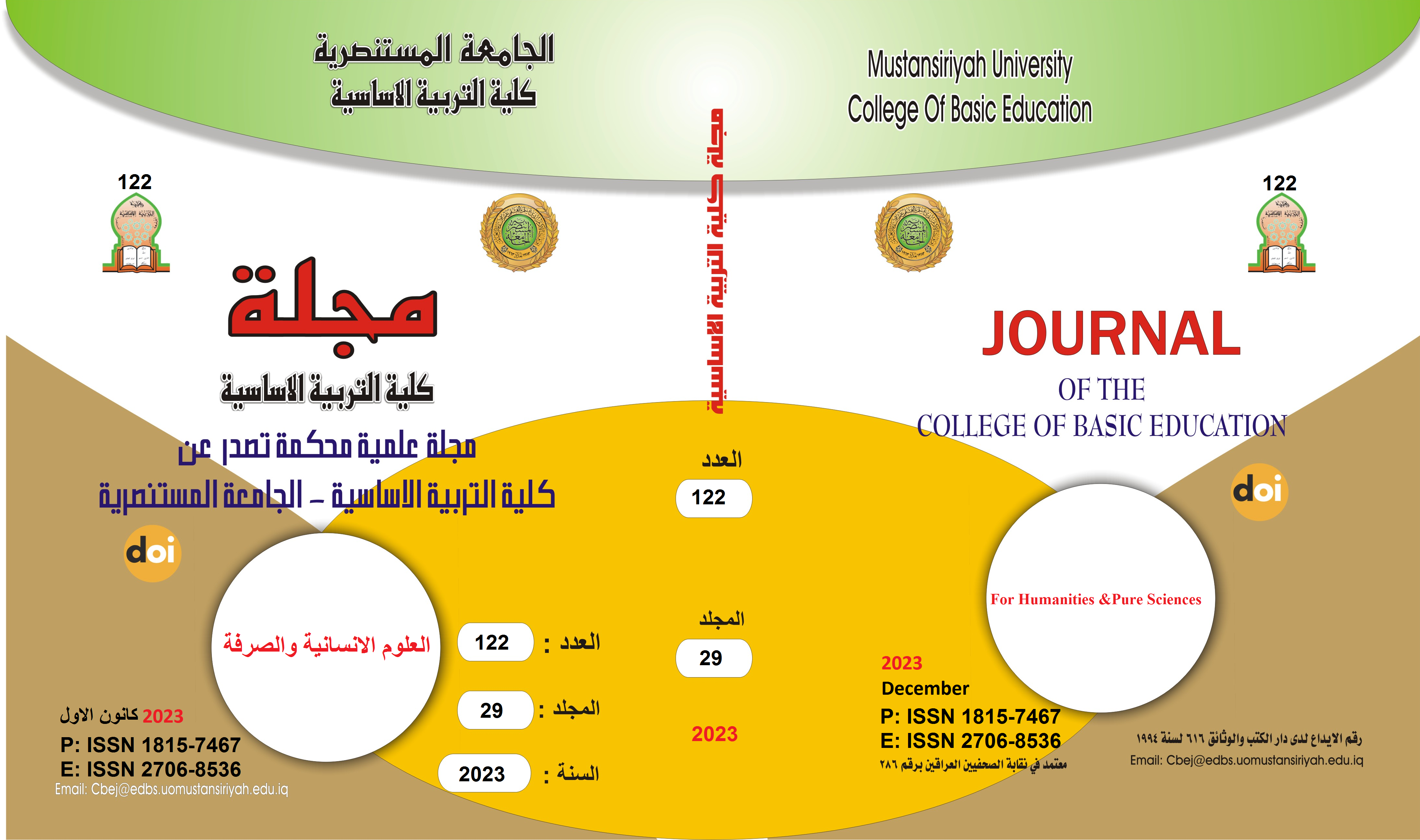The effectiveness of the Bransford model in the qualitative achievement of the students of the Institute of Fine Arts in the subject of aesthetic education
Main Article Content
Abstract
The movement of scientific and technological development that has been overtaken by our current era has decided the need to crystallize the concept of type at the expense of quantity in achieving educational outputs according to educational systems and models that work to raise the English and academic achievement of learners in general, and female learners from the students of the Institute of Fine Arts in Baghdad in particular in One of the specialized subjects that reflected the existence of a defect in its teaching methods and the programming of its learning curriculum according to the exploratory study conducted by the researcher. Therefore, this procedural objective was adapted to other than the following hypothesis: 1- (There is no statistically significant difference at the level of significance (0.05) between the average grades of students’ grades. The experimental group and the mean scores of the control group students in the post qualitative achievement test). For the purpose of verifying the research hypothesis, the researcher adopted the experimental approach on the community, which consisted of (124) female students of the Institute of Fine Arts in Baghdad Governorate - Karkh Education Directorate, as a random sample of (20) female students was selected, distributed randomly into two experimental groups consisting of ( 10) a female student, and a female officer consisting of (10) female students, with adjusting the variables (intelligence, previous experience, achievement of the mother and father). The researcher adopted the experimental design with partial control of the experimental and control groups, with the achievement of the internal and external safety carriers. The results of the research resulted in the emergence of a high level of qualitative achievement The students of the experimental group compared with the control group as a result of adopting the Bransford model, which helped to improve the level of experience in aesthetic education among the students, which indicates the effective impact that it had on the learners in facing the requirements of the educational situation and the ability to solve problems and develop their knowledge structure.
Article Details

This work is licensed under a Creative Commons Attribution-ShareAlike 4.0 International License.
